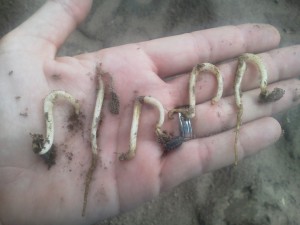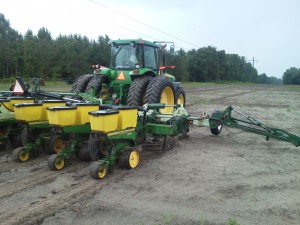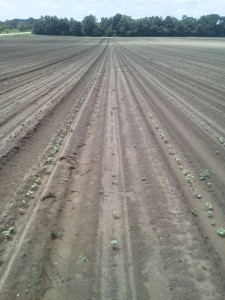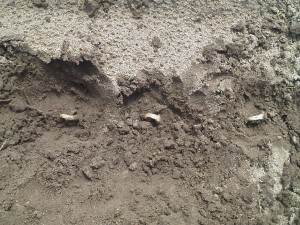Here in Columbia County I have been working with a farmers to setup cotton planters and make adjustments. We are setting up this KMC Strip-till rig and John Deere planter to plant about 2.25 seeds per foot, or about 5.5 inches apart in optimum moisture and temperature conditions. This farmer was adjusting vacuum settings trying not to plant too many doubles. I have heard from some farmers that thought they planted too much seed this year. I suspect they recently got the seed bill. I have also been looking at cotton stands and addressing some replant issues. The earliest cotton in the area was planted around April 23. Overall, stands look good which is probably a result of the consistent spring rains we have received. The only instances I have seen of stand issues are equipment related. In one case, the 28% nitrogen starter fertilizer was placed too close to the row on a single row unit. The UGA Cotton Production Guide states that cotton seed is extremely sensitive to 28% nitrogen. We need to make sure that row fertilizer is at least 2″ off the row, and keep the rates low to prevent this type of injury.
The latest problem I am seeing appears to be a planting depth issue. In this field, there was a good stand, except for the 3rd row unit of an 8 row planter. Virtually every third row is void of emerged seedlings. When I dig in the row, I can find gooseneck plants spaced every 4″.
It’s interesting you can have and 80,000 lb tractor and 20,000 lb planter placing a 0.1 gram seed in the ground, and 1/2″ can make the difference in success and failure. The farmer and I discussed this issue, and we hope to see a skip row effect where plants beside the missing row make a few more bolls to compensate. It’s not ideal, but because it is only one row of every 8, the decision was made to leave it alone.

This is referred to as the “crook stage.” The hypocotyl elongates and forms a hook, that pushes through the soil.



